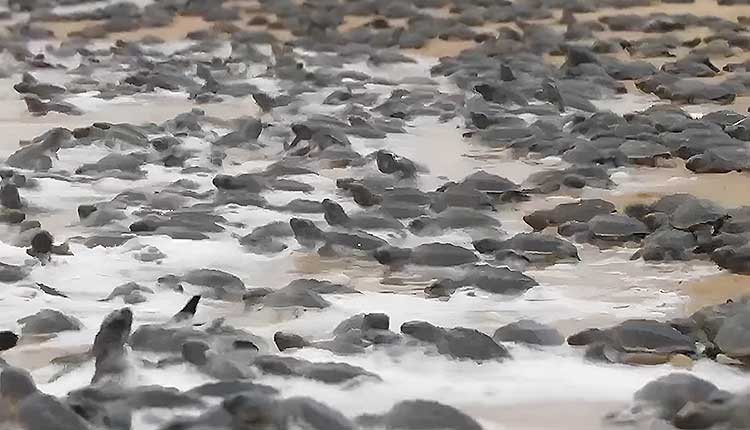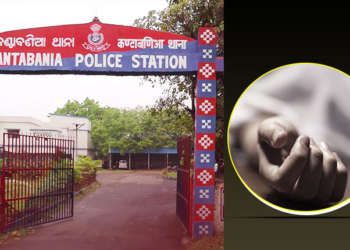Bhubaneswar: A breathtaking natural spectacle recently unfolded along the coast of Odisha, as millions of Olive Ridley turtle hatchlings made their way to the Bay of Bengal at the Rushikulya rookery.
A video capturing this rare and awe-inspiring moment has gone viral on social media, drawing widespread admiration and appreciation.
The video, shared by Susanta Nanda, former Principal Chief Conservator of Forests (Wildlife), on his social media account X (formerly Twitter), offers a glimpse into one of nature’s most captivating events. It shows a sea of tiny hatchlings instinctively crawling toward the ocean, while gentle waves occasionally sweep them back, creating a stunning and emotional visual experience.
Sharing the video, Susanta Nanda wrote in the caption, “One of the most incredible sights of nature unfolding at Rushikulya rookery of Odisha, Millions of Olive Ridley hatchlings making their way to the sea… Odisha had a record mass nesting. After diligent protection by the staff on ground for 6 weeks, here they go, to return again.”
One of the most incredible sights of nature unfolding at Rushikulya rookery of Odisha💕
Millions of Olive Ridley hatchling making their way to the sea…
Odisha had a record mass nesting. After diligent protection by the staff on ground for 6 weeks, here they go, to return again☺️ pic.twitter.com/wcX6hrYEWb— Susanta Nanda (@susantananda3) April 13, 2025
The Rushikulya coast is one of the three major mass nesting sites for Olive Ridley turtles in India, the others being Gahirmatha and the Devi River mouth. Each year, these endangered turtles arrive in huge numbers to lay eggs, with hatching typically occurring in the weeks that follow.
The video has since garnered over 10,900 views, more than 600 likes, and numerous comments from users who described the event as “amazing,” “extraordinary,” and “a visual treat.”
These heartwarming scenes have not only delighted nature lovers but also highlighted the success of sustained conservation efforts in the region.
Forest officials and local conservationists have worked tirelessly to safeguard the nesting sites, ensuring minimal human interference and maximum protection for the eggs and hatchlings during this sensitive period.
















